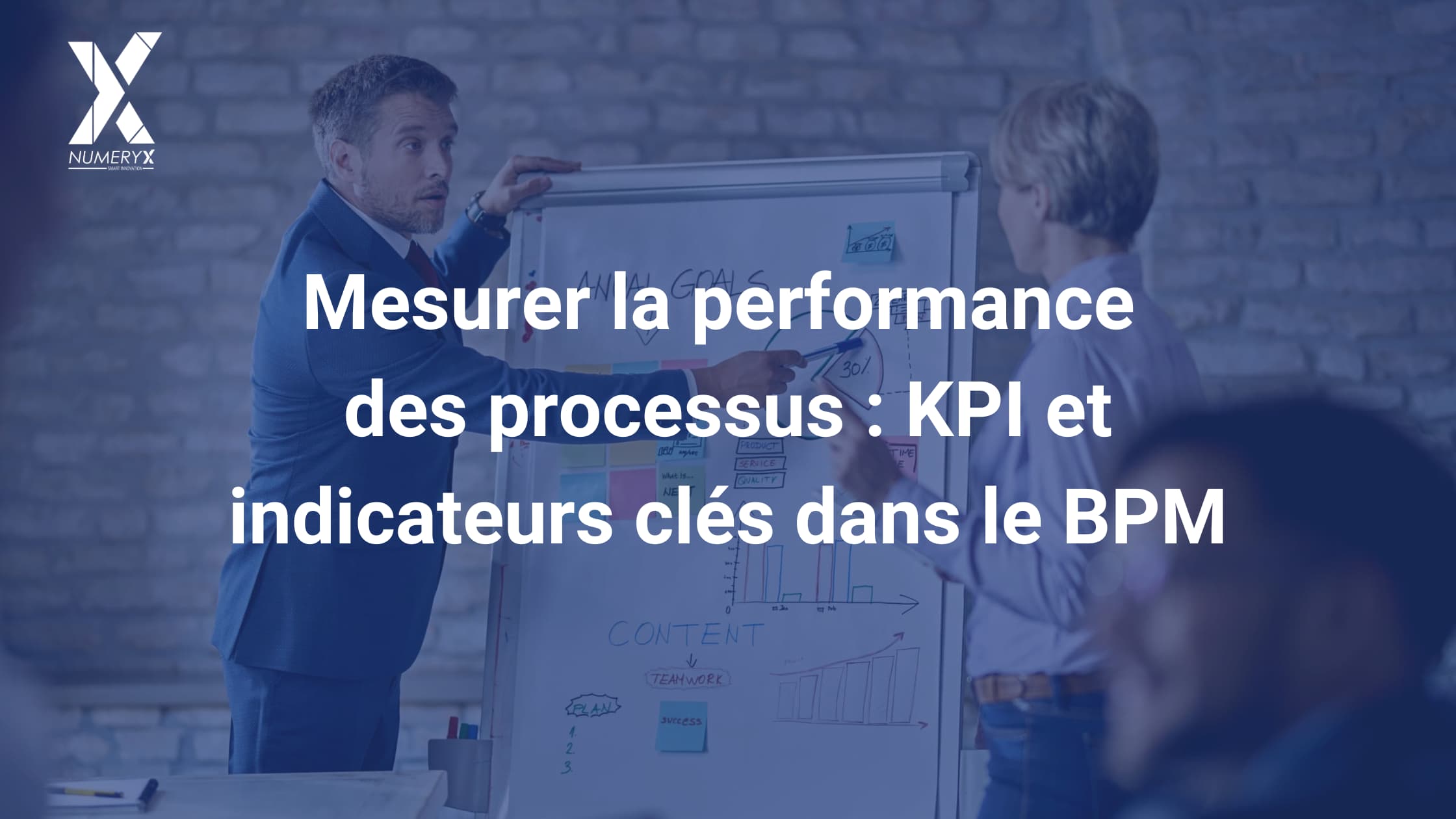As mentioned in a previous article, ” Introduction to Business Process Management “, implementing a BPM tool is ideal for companies seeking to standardize, automate and optimize their business processes on an ongoing basis.
To assess the effectiveness of these processes and ensure that they contribute effectively to strategic objectives, it is necessary to measure their performance using KPIs (Key Performance Indicators) and other clearly identified key indicators.
In this article, we explore some of the key performance indicators you need to track to assess the efficiency of your processes when implementing a BPM solution. Please note that KPIs must always be specific to each individual case. Some of the KPIs presented won’t be relevant to you, while others will be unavoidable. Ultimately, it’s your needs that define your choice of KPIs.
1. The fundamentals of KPIs and Key Performance Indicators
KPIs, or key performance indicators, must be the starting point for any performance measurement. While this may seem obvious, far too many companies embark on the digitization of processes without really defining their expectations and identifying the expected results. Unfortunately, this often leads to disappointment and misunderstanding, or even to questioning the chosen BPM solution.
KPIs are measures that are usually quantifiable, but can also be qualitative, enabling us to assess the effectiveness of a process in achieving defined objectives. These indicators help to monitor performance, identify weak points and make informed decisions to improve processes. They must be specific, measurable, achievable, relevant and time-bound (SMART).
2. Key KPIs for assessing process performance
2.1. Le « Cycle Time » (Temps de cycle)
Cycle time” measures the total time required to complete a process, from start to finish. A short cycle time generally indicates efficient process execution, while a long cycle time may signal inefficiencies or bottlenecks. However, it’s important to remember that some cycles can be long by their very nature, because they meet standardized imperatives, and are therefore perfectly efficient, as in the case of product innovation. The development of a new product may take months or even years, but that doesn’t mean it’s inefficient.
2.2. Le taux de conformité
The compliance rate is a fine example of both a quantitative and qualitative objective. It assesses the proportion of processes carried out in compliance with established standards and procedures. It is very important to ensure that processes comply with regulations and internal standards. A high compliance rate means that the process is generally followed correctly, reducing the risk of non-compliance and errors.
2.3. Le taux d’erreur, ou de défaut
This KPI measures the frequency of errors or defects in processes. A high error rate may indicate quality problems or shortcomings in the training of those involved in the process. Tracking this KPI enables you to identify areas requiring improvement and implement corrective actions to reduce errors.
2.4. Le coût par processus
Process costing calculates the total cost associated with carrying out a specific process. The aim is to assess the economic efficiency of the process. A high cost, for example, may signal inefficiencies or waste, and a thorough analysis can help reduce costs and improve profitability.
2.5. La satisfaction client
Perhaps it’s the KPI that should come first. Indeed, even if the process to be optimized does not directly affect customer satisfaction, it should always be studied in the light of this objective. Customer satisfaction is a central KPI for assessing the impact of processes on end customers. Generally measured by surveys or customer feedback, it indicates whether processes are meeting customer expectations and contributing to their overall satisfaction. High satisfaction often goes hand in hand with a well-executed process. Response times, for example, assess the time taken to respond to requests or events in a process. Particularly important in customer-oriented processes, where rapid response times can improve customer satisfaction and service efficiency.
2.6. La productivité
Productivity measures the relationship between the output of a process and the resources, both human and material, used to achieve it. Productivity is naturally one of the first KPIs measured in companies. High productivity indicates efficient use of resources, while low productivity may suggest inefficiencies, work overloads or poor use of material resources.
2.7. Le taux d’achèvement
The completion rate measures the proportion of completed tasks or projects in relation to the total number planned. It is often expressed as a percentage, and is used to monitor the progress of a project or initiative. A high completion rate indicates that processes are well managed and that objectives are being met on schedule.
3. How to choose the right KPIs?
The choice of appropriate KPIs depends on a number of factors, including the organization’s strategic objectives, the type of process to be evaluated and the stakeholders involved. Keep in mind to select KPIs that align operational objectives with strategic goals, and provide clear, actionable information for your business.
But above all, the choice of KPIs depends on you, your needs and your objectives! Don’t just look at what your neighbor is doing. Ask yourself what you want to improve, optimize, evolve… and you’ll define the KPIs that correspond to you.




